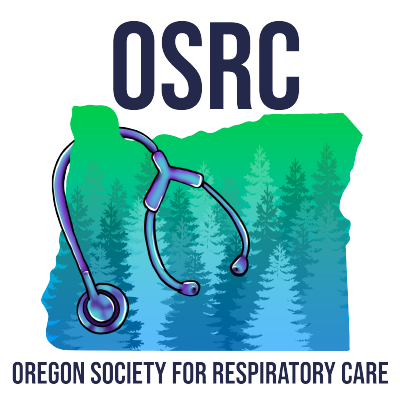By Joe Dwan, MS, RRT
As RCPs, there are many lung recruitment maneuvers that our profession has utilized over the years. Defining lung recruitment maneuver as a technique to open collapsed alveoli, incentive spirometry is a lung recruitment maneuver. For mechanical ventilation, lung recruitment maneuvers include Sigh, High Frequency Ventilation, Airway Pressure Release Ventilation, prone positioning and PEEP, PEEP and more PEEP. This article will discuss lung recruitment maneuvers specifically for ARDS patients, but may also apply to Acute Lung Injury (ALI) patients.
The internationally renowned Dr. Amato described lung recruitment maneuvers in 1998 with his article on lung protective ventilation strategies (1). By now, every RT in the country should be using the low volume (4-6 cc/kg) strategy for ARDS patients, as described in the ARDSNet study (2). This study showed a 22% decrease in mortality of ARDS patients by using the low lung volume/lung protection ventilatory strategy. Those RTs who are not using this ventilatory strategy for ARDS patients are at risk for negligence in the care of their patients.
The interest in lung recruitment maneuvers has been driven by the ARDSNet low volume ventilation strategy in ARDS, because these low tidal volumes could result in de-recruitment or atelectasis of alveoli, in addition to de-recruitment caused by ARDS. Volutrauma, sheering pressures, Volume Induced Lung Injury (VILI) and de-recruitment are all terms to describe the damage caused by a high volume (10-12cc/kg) ventilatory strategy for ARDS patients. Marini defined lung recruitment as a sustained increase in airway pressure with the goal to open collapsed lung units and then add sufficient PEEP to maintain the units open (3). He further described lung protective strategy as preventing the destruction of lung units due to the repetitive opening and closing of alveolar units, reducing lung inflammation, and improving gas distribution and oxygenation (3). According to Dr Art Slutsky, keynote speaker at this years AARC convention, chemical mediators are implicated in ARDS lung injury and end-organ dysfunction, leading to mortality (15).Marini also believes that sustained recruitment of alveoli is important in avoiding ventilator-induced lung injury (VILI)(4). The nature of the ARDS lung is not as homogeneous as the ‘white-out’ CXR appears. There are alveoli with consolidated and partially flooded alveoli next to both open and collapsed alveoli. Therefore, potentially inflatable (recruitable) alveoli are intermixed with consolidated alveoli that cannot be recruited with a recruitment maneuver. This is an important point when assessing the success or failure of a recruitment maneuver.
Prone positioning of severe ARDS patients has improved oxygenation (12). Albert reported PaO2 improved in 50-70% of ARDS patients while in the prone position (5). Marini reported failed recruitment maneuvers when the patient was supine, but successful recruitment maneuvers when the patient was placed in the prone position (4). Gattinoni reported no survival benefit from the use of prone positioning in ARDS patients (9). Marini and Gattinoni both prone patients who are refractory to supine recruitment maneuvers, with sometime surprising results. (14)
High PEEP levels, as a recruitment maneuver, has been studied by various authors. Grasso studied 22 pts with ARDS who had been ventilated with the ARDSNet lung protective strategy and applied 40 cm CPAP for 40 seconds (6). He found the responder group increased PaO2/FiO2 by 175% while the nonresponders increased by only 20%. The responders had been ventilated for a shorter time, had less hemodynamic impairment, and lower lung and chest wall elastance. (6)
The Lim study showed that early intervention in ARDS patients with recruitment maneuvers was more successful than late intervention of recruitment maneuvers (7). Lim, Marini & others have described better success with recruitment maneuvers in ARDS patients with extrapulmonary causes of the ARDS rather than primary causes of ARDS. Examples of extrapulmonary causes of ARDS are sepsis and trauma. Examples of primary causes of ARDS are pneumonia and aspiration. Dries’ article discussed experimental oleic acid injury resulting in a lung that was 55% recruitable whereas primary pulmonary ARDS had less than 8% total potential recruitment (8).
In an unpublished King County (Seattle) study, Dr Leonard Hudson evaluated recognition of ALI and ARDS (15). Of the 6318 ventilated patients evaluated, 4102 were screened for ALI using the American European Consensus Conference definition (bilateral infiltrates on frontal CXR & PCWP<= 18 or no evidence of left atrial hypertension. With these criteria, then ALI is defined as PaO2/FiO2 ratio <=300 while ARDS is defined as PaO2/FiO2 <=200). (15) The results showed that ALI is more common than previously reported (previous ALI/ARDS incident 3-18/100,000/yr, King Co. 50-100/100,000/yr).(15) also showed that recognized ALI patients had an average ventilator length of stay of 10.7, whereas the unrecognized ALI patients average VLOS was 7.0 days (15). The implication is that recruitment maneuvers may be indicated on many more patients that is now considered.
Graphics on mechanical ventilators is an important tool to assess recruitment maneuvers and to determine the best PEEP level, which prevents de-recruitment after the maneuver. Graphics should be the standard of care in all ICUs. The pressure/volume curve has been used for years as means to determine compliance and airway resistance of the patient. The Pflex, also known as the Critical Opening Pressure, on the pressure/volume curve is that point on the inspiratory limb of the curve where the volume dramatically increases with smaller pressure changes. However, Marini recently stated that we should not use the Pressure-Volume curve for Best PEEP, when using the lower inflection point or Pflex (15). The algorhythms of the latest ventilators plus the low resolution of graphics screens make it difficult to clearly identify the Pflex PEEP level.
The optimal recruitment maneuver has not been clearly identified in the literature. Multiple maneuvers are described in the literature. Marini uses the 40/40 rule. Which is 40 cm H20 PEEP for 40 seconds, based upon the old anesthesia method to reinflate the post-op lung with 10 breaths for 40 seconds (15). The review article by Barbas states the recruitment maneuver of 34-40 cm CPAP for 40 seconds followed by the PEEP set at 2 cm above the Pflex and tidal volume <6 ml/kg were associated with a 28 day ICU survival rate of 62%. (10) This contrasts with a survival rate of only 29% with conventional ventilation, without recruitment maneuvers and with using the lowest PEEP for acceptable oxygenation and a Vt of 12 ml/kg. (10). This review article also discusses thoracic CT scans and Electrical Impedance Tomography as tools to recruit ARDS lungs and adjust the best PEEP levels, while maintaining adequate tidal volume ventilation (10).
The ARDSNet group also evaluated recruitment maneuvers in a randomized control trial. They evaluated the effects of recruitment maneuvers on oxygenation, duration of the effects, and immediate effects on blood pressure, heart rate and barotrauma. Their recruitment maneuver applied CPAP of 35-40 cm for 30 seconds. They monitored SpO2, FiO2/PEEP, blood pressure, heart rate, and CXR for 8 hours following the procedure (11). They also described 43% of the 96 patients had primary pulmonary, not extrapulmonary, ARDS (11). Others have described the recruitment maneuver as having minimal effect on SpO2 with primary pulmonary ARDS. In their discussion, they note their patients had higher PEEP levels (they started at 13 cm H2O) that may have accounted for the variable results in SpO2 and FiO2/PEEP measurements. (11). They also reported variable static compliance measurements. The article neglected to discuss autopeep or graphics, nor did they determine the best PEEP level following the recruitment maneuver. This is a major flow in this study. They did note that the barotrauma rate for the patients with or without the recruitment maneuver were similar (11).
Recruitment strategies, opening the lung and keeping it open have been the topics of many lectures and discussions the last several years. For more than 30 years, Best PEEP studies have been done measuring three parameters: oxygenation, cardiac function, and compliance. The Open Lung Tool on the Servo I ventilator utilizes similar graphed measurements to determine the effectiveness of recruitment maneuvers and the best PEEP level to prevent derecruitment. Other manufacturers may follow suit with similar graphic visualization of opening the lung with PEEP. Barriers to providing lung protective ventilation was the title of a survey of ICU respiratory therapists and nurses. (12).
Barriers identified included physician willingness to relinquish control of the ventilator, physician recognition of ALI/ARDS, and perceptions of patient contraindications to low tidal volumes. Additional barriers included patient discomfort and tachypnea, concerns over hypercapnia, acidosis and hypoxemia (12). Techniques for overcoming these barriers include specific ventilator setup recommendations, clinician (& staff) education, and objective tools to assess patient discomfort (12). This information may be useful when you implement both the ARDSnet low volume ventilation strategy and recruitment maneuvers to open the lung.
As respiratory therapists, overcoming barriers when implementing new procedures, such as recruitment maneuvers, can be challenging. Learning the literature of recruitment maneuvers, assessing and discussing the pros and cons of the procedure, educating your coworkers including nurses and physicians, utilizing evidence based medicine and tools, could assist in your success.
Conclusions from the literature on lung recruitment maneuvers are unclear. Defining when, how and why to do recruitment maneuvers is uncertain. Opening the lung by recruiting all available alveoli, and keeping the alveoli is logical and consistent with many past practices, such as Sigh, Best PEEP, etc. Utilizing recruitment maneuvers early during ARDS has some evidence to support it. Applying the recruitment maneuvers to extrapulmonary, as opposed to primary pulmonary ARDS patients has some evidence to support it. The optimal method of recruitment maneuvers is not well defined, although many are using the 40 cm CPAP for 40 seconds. However, there is now sufficient evidence that recruitment maneuvers, coupled with Best PEEP studies, can keep the lung open in many ARDS patients.
References
- Amato, Effect of a protective-ventilation strategy on mortality in the acute respiratory distress syndrome, NEJM, 1998;338:347-354.
- Acute Respiratory Distress Syndrome Network, Ventilation with lower tidal volumes as compared with traditional tidal volumes for acute lung injury and the acute respiratory distress syndrome, NEJM, 2000;342:1301-1308.
- Marini, Recruitment maneuvers to achieve and “open lung”: Whether and how?, Crit Care Med, 2001;29(8):1647-1648.
- Marini, Efficacy of lung recruiting maneuvers: it’s all relative, Crit Care Med, 2003;31(2): 641-642.
- Albert, The prone position eliminates compression of the lungs by the heart, Am J Respir Crit Care 2000;161:1660-1665.
- Grasso, Effects of recruiting maneuvers in patients with acute respiratory distress syndrome ventilated with protective ventilatory strategy, Anesthesiology 2002;96:795-802.
- Lim, Effect of alveolar recruitment maneuver in early acute respiratory distress syndrome according to antiderecruitment strategy, etiological category of diffuse lung injury, and body position of the patient, Crit Care Med, Feb 2003;31(2):411-418.
- Dries, J Trauma, 2003; 54(2):326-328.
- Gattinoni, Effect of prone positioning on the survival of patients with acute respiratory failure, NEJM, 2001; 345(8): 568-573.
- Barbas, Lung recruitment maneuvers in acute respiratory distress syndrome and facilitating resolution, April 2003; 31(4):S265-S271.
- ARDSNet, Effects of recruitment maneuvers in patients with acute lung injury and acute respiratory distress syndrome ventilated with high positive end expiratory pressure, Feb 2003; 31(11);2592-2597.
- Rubenfeld, Barriers to providing lung-protective ventilation to patients with acute lung injury, Crit Care Med, 2004; 32(6); 1289-1293.
- Lamm, Mechanisim by which the prone position improves oxygenation in acute lung injury”, Am J Respir Crit Care, 1994; 150:184-193.
- Marini, Gattinoni, “Ventilatory management of acute respiratory distress syndrome: A consensus of two:, CCM, 2004, 32(1):250-255.
- Maquet Servo Seminar, “New Insights in Mechanical Ventilation”, Aug 04, Monterey, Calif.

